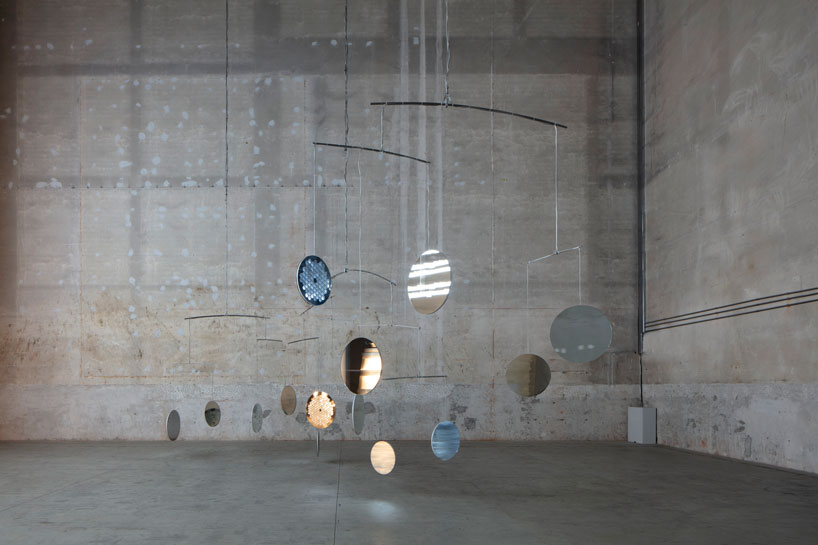cerith wyn evans hangs neon scribbles in solo exhibition at milans hangarbicocca
designboom_milan’s pirelli hangarbicocca presents ‘…the illuminating gas’, the largest-ever solo exhibition of welsh artist cerith wyn evans. curated by roberta tenconi and vicente todolí, the exhibition presents 24 works, including historical sculptures, complex monumental installations and new productions.
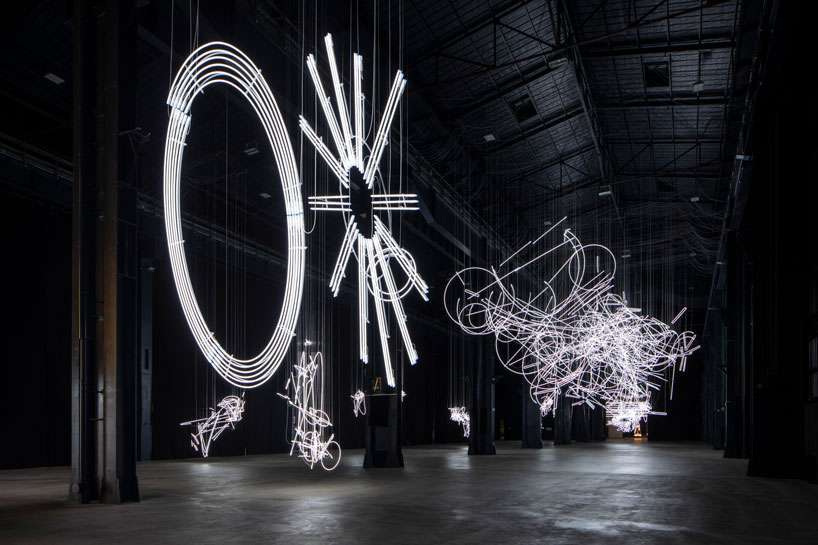
images courtesy of pirelli hangarbicocca
set over 5 thousand square meters of the navate and the cubo sections of pirelli hangarbicocca, the exhibition opens with seven imposing 20-meter-high light columns, ‘starstarstar/steer (totransversephoton)’ (2019). consisting of a skeleton of tubular lamps assembled from cylinders of various heights, the work was made specifically for the occasion, creating a choreography of light and shadow that invades the low-light setting.
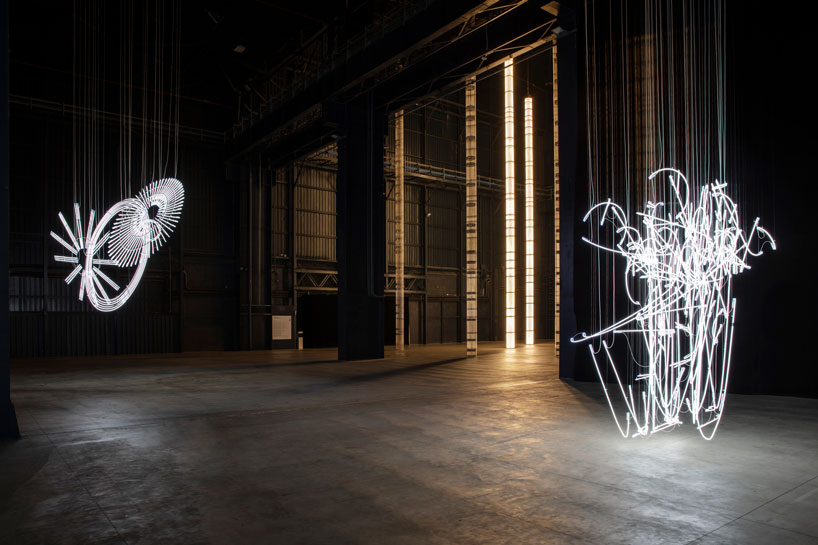
this energy release provides a counterpoint to the sound emitted by the adjacent work, composition for 37 flutes (2018), an ethereal glass sculpture also composed of transparent elements. the air from its thin reeds produces a hiss that suggests a state of tension between the harmony of a breath and its dissipation.
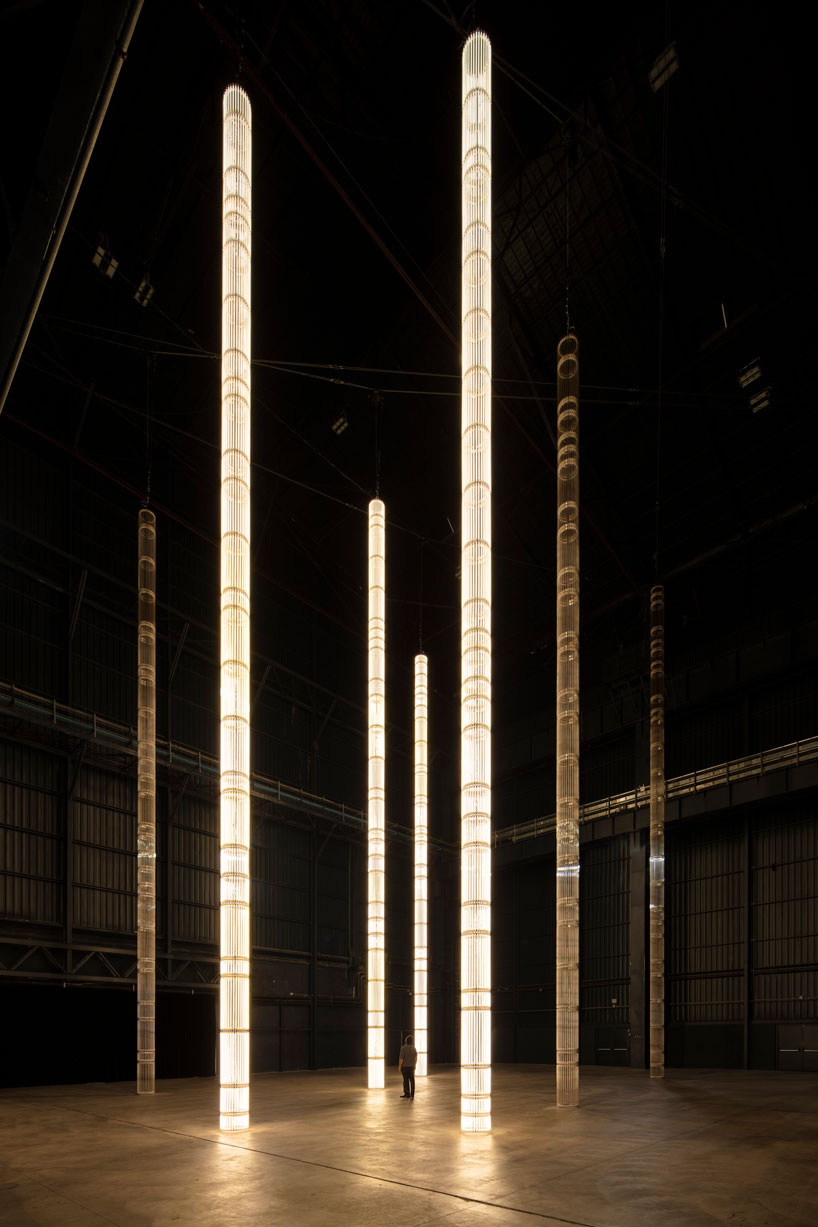
13 neon sculptures of the series ‘neon forms (after noh) (2015-2019) are set along the navate suspended in an elaborate visual score conceived by the artist. they engage in a dialogue with the mile-long tangle of lines and luminous curves of ‘forms in space… by light (in time)’ (2017), a work originally conceived for the duveen galleries of the tate britain in london and presented in milan in a new configuration.

for the ‘neon forms (after noh)’ series, the artist draws on the repertoire of steps, head and kimono movements or fan gestures performed by noh theatre actors, as summarized and represented in the charts describing how a certain role is staged. cerith wyn evans presents them in a new guise through a complex montage that reverses, twists, mirrors, dilates, extends and overlaps.
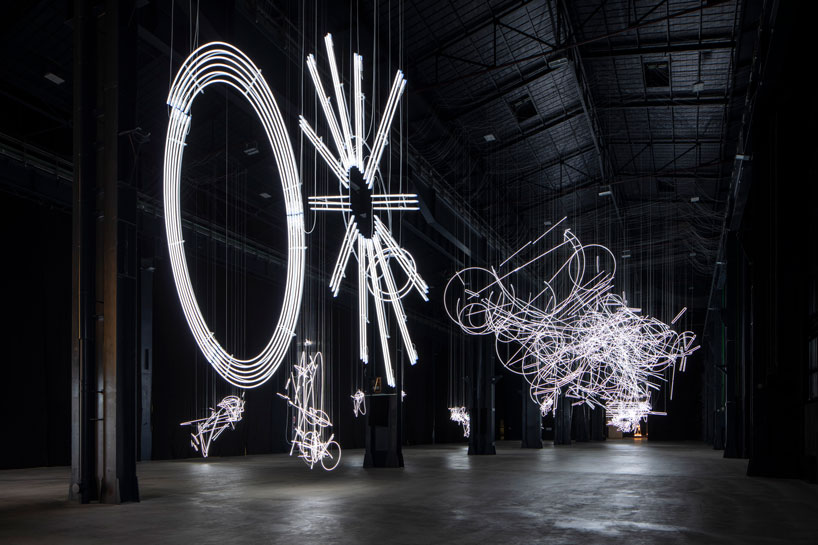
‘forms in space… by light (in time)’ also incorporates forms used by marcel duchamp in ‘the bride stripped bare by her bachelors, even,’ also known as the large glass (1915–1923) particularly that of oculist witnesses, a diagram of the optical device used to measure sight and transforms them into light. the very title of the exhibition actually refers to duchamp’s final work, étant donnés: 1. la chute d’eau, 2. le gaz d’éclairage [given: 1. the waterfall, 2. the illuminating gas],’ a piece that the french artist worked on for 20 years between 1946 and 1966. it represents an enigmatic diorama visible only through the hole at the center of a door.
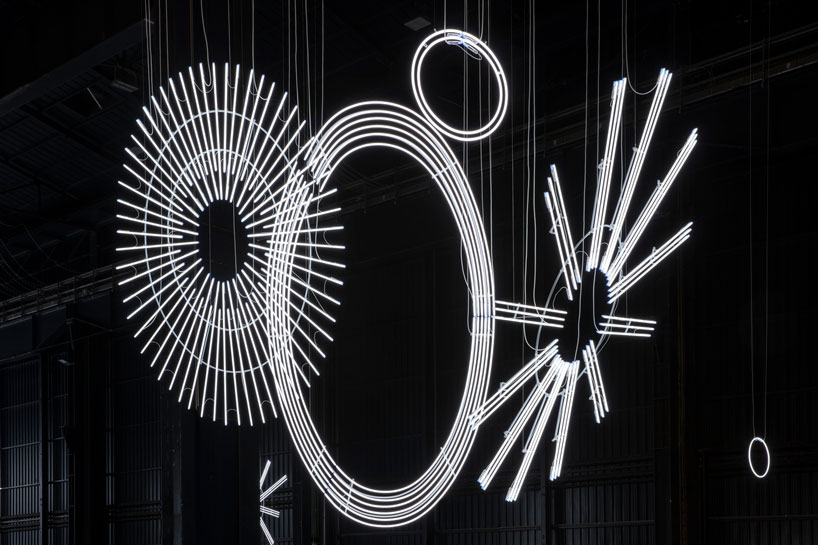
visitors are greeted by two installations conceived as a personal and subjective sensory experience: ‘E=C=L=I=P=S=E’ (2015), a monumental neon sign describing the temporal and geographical progression of a solar eclipse across different continents, and ‘C=O=N=S=T=E=L=L=A=T=I=O=N (I call your image to mind)’ (2010), a suspended mobile composed of reflective disks and directional speakers that form a polyphonic collage composed by the artist from various sources, including his own arrangements on the piano and recordings by a radio telescope in an astronomical observatory.
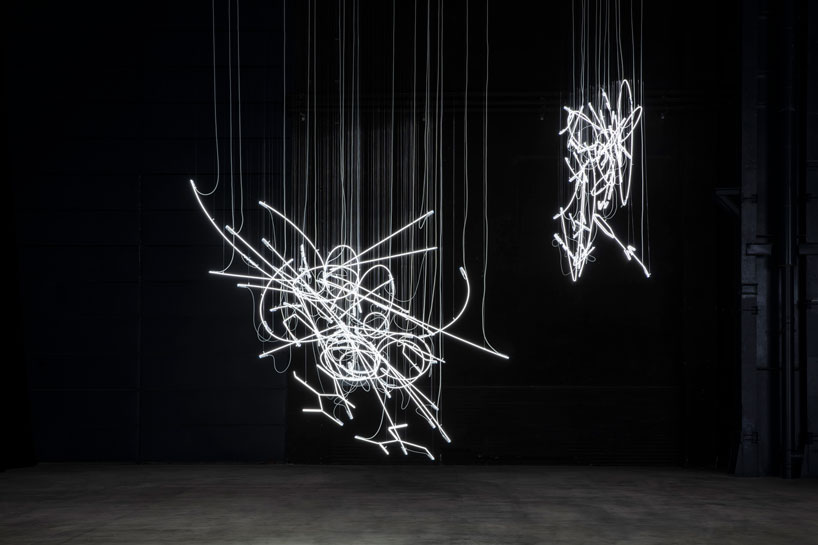
further along in the space, ‘S=U=T=R=A’ (2017) and ‘mantra’ (2017) appear as two pairs of murano blown-glass chandeliers that emit flashing lights according to a composition written and performed by cerith wyn evans himself. light and movement return in ‘still life (in course of arrangement…) v’ (2015), an installation that refers to the dawn of cinema.
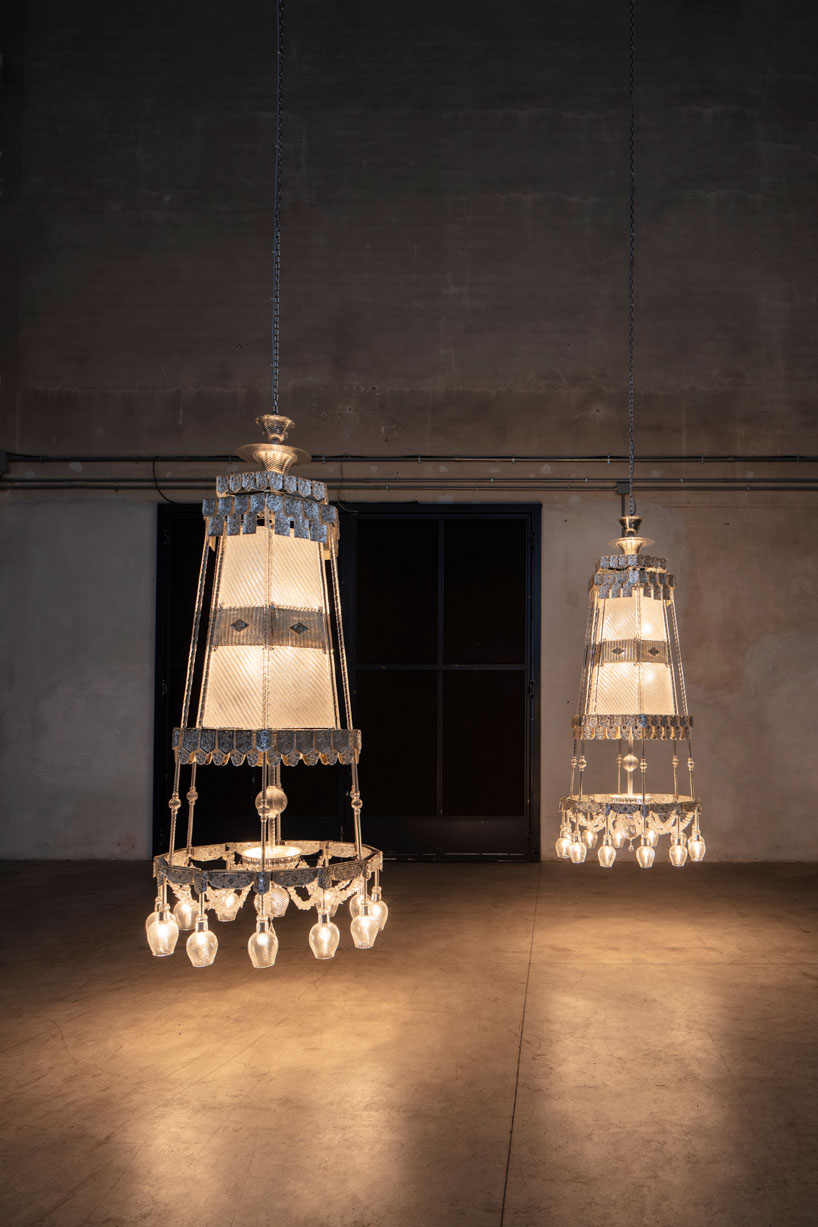
finally, ‘T=R=A=N=S=F=E=R=E=N=C=E (frequency shifting paradigms in streaming audio)’ (2015), conceived as an immaterial column composed exclusively of audio coming from a directional speaker placed on the floor, serves as a counterpoint to the seven light columns that open the exhibition. the show also incorporates the external architecture of pirelli hangarbicocca by presenting ‘TIX3’ (1994), the artist’s first neon work—consisting of the word ‘exit’ spelt back to front.
